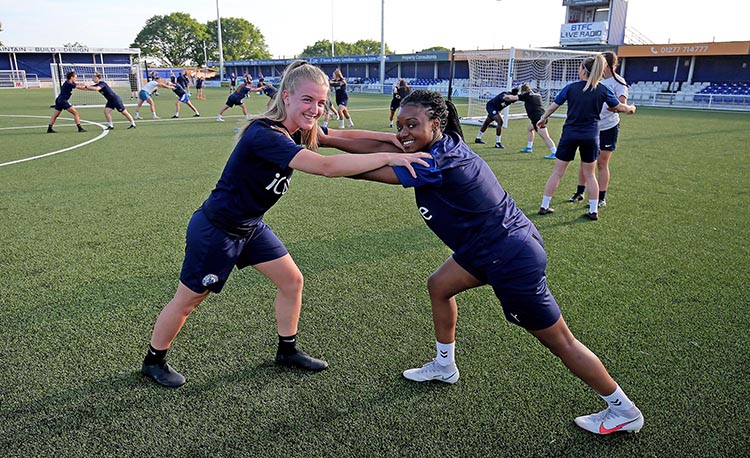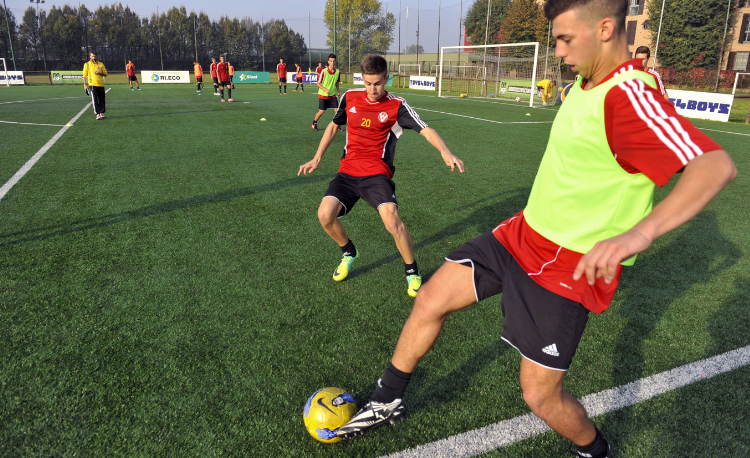Pre-season tips for grassroots coaches
Integrating new arrivals and getting players match fit are among the challenges facing coaches before each campaign. NATHAN COOKSON provides his advice.
With pre-season under way for some, the prospect of planning for the season ahead, and executing that preparation, can seem daunting for many coaches at grassroots level.
From retaining last season’s players, recruiting and integrating new arrivals, and whipping them all into some form of physical, technical and tactical shape, there is always a lot to tackle.
Fleet Town Women’s manager, Nathan Cookson, shares his advice and experiences to hopefully make things a little easier...
Building a squad
NC: "Our first few sessions back in a new season are open [to all] training, including trialists.
"To build a harmonious squad, we feel the [potential] new players need to trial us as coaches as much as us trialling them as players. We want them to know they will like what we do as much as we like what they do.
"When looking to build a squad, I want to know the new players won’t upset the dynamic, and will fit in as people, first and foremost, no matter their ability."
Integrating new players
NC: "This is important to do quickly to stop divides forming, or different groups or cliques developing within the team, such as old players versus new players.
"There are simple ways to do this, like mixing players up for drills and using practices that require a high amount of communication, which gives players the chance to introduce themselves early on.
"You can also give players leadership roles, like setting up the teams in a match, allowing them to get to know their new team-mates."
Fitness
NC: "This is the part of pre-season that I don’t think any player truly looks forward to. I know as a player I don’t!
"I will slowly build up the fitness of players, rather than throwing them in at the deep end.
"This is beneficial to us for a couple of reasons. Firstly, for player enjoyment and, secondly, it can cause injury if the players over-exert themselves too soon.
"When we first start with fitness, we like to use a ball as much as possible, so players can build up their fitness almost without realising, while getting touches in, too.
"We then go into more fitness-based sessions, without the ball."
Getting players match ready
NC: "All of the above helps players get on the way to being match ready, but for the final touches I like to include a team meeting.
"This helps the new players understand how we plan to play and their individual responsibilities. They can also bring up any questions or suggestions they might have.
"Once everyone is on the same page, small-sided games can be useful in bringing out certain tactical and technical parts of how we want to play.
"Match scenarios can also be useful in magnifying parts of the pitch and working on specific areas to improve. This can all end with full-sized games.
"These can be coached at times, but it’s also important to allow them to naturally flow, as this can help players make their own decisions.
"Making practices more game-realistic and random helps players’ thought processes. If they make mistakes, they can learn – and, hopefully, any successes they have can be replicated on the pitch on matchday."
Related Files
Newsletter Sign Up
Coaches Testimonials

Gerald Kearney, Downtown Las Vegas Soccer Club

Paul Butler, Florida, USA

Rick Shields, Springboro, USA

Tony Green, Pierrefonds Titans, Quebec, Canada
Subscribe Today
Discover the simple way to become a more effective, more successful soccer coach
In a recent survey 89% of subscribers said Soccer Coach Weekly makes them more confident, 91% said Soccer Coach Weekly makes them a more effective coach and 93% said Soccer Coach Weekly makes them more inspired.
*includes 3 coaching manuals
Get Weekly Inspiration
All the latest techniques and approaches
Soccer Coach Weekly offers proven and easy to use soccer drills, coaching sessions, practice plans, small-sided games, warm-ups, training tips and advice.
We've been at the cutting edge of soccer coaching since we launched in 2007, creating resources for the grassroots youth coach, following best practice from around the world and insights from the professional game.








